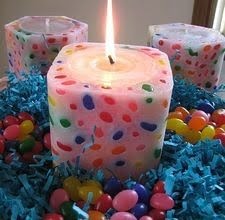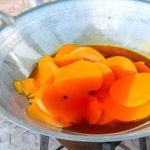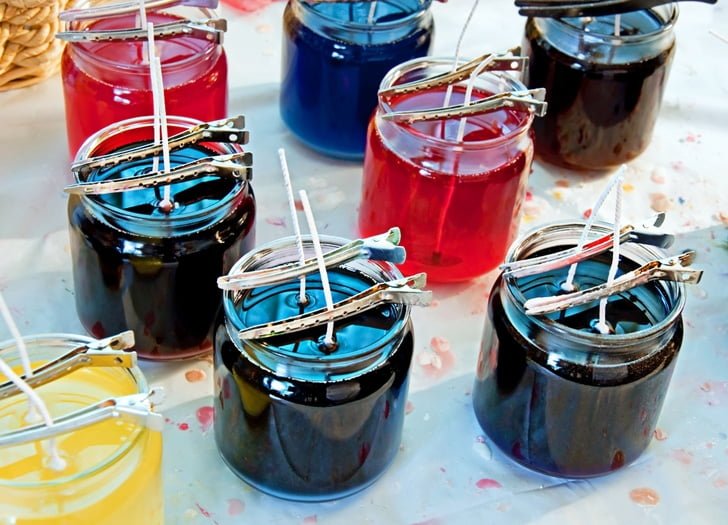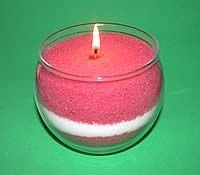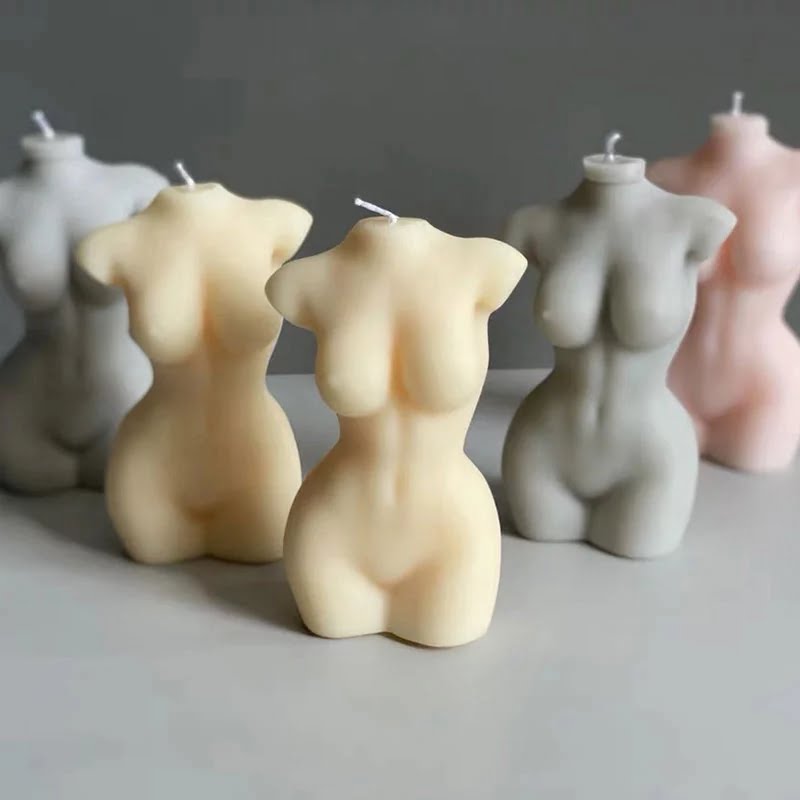Candle making is not only a beloved craft but also a growing business for many individuals. As the demand for handmade candles continues to rise, it is essential for candle makers to effectively track their production costs and understand their profit margins. This is where the Candle Making Cost Spreadsheet comes into play.
The Candle Making Cost Spreadsheet serves as a valuable tool in managing the financial aspect of candle production. With this spreadsheet, candle makers can easily track and analyze their costs, identify areas for improvement, and make informed pricing decisions. By understanding their expenses and profit margins, candle makers can ensure the growth and success of their businesses.
By utilizing a well-maintained Candle Making Cost Spreadsheet, candle makers gain valuable insights into the profitability of their products and pricing strategies. In this article, we will explore the importance and benefits of using such a spreadsheet in detail. We will also provide a step-by-step guide on how to create an effective cost tracking system and discuss essential components to consider.
Whether you are starting your own candle making business or simply want to manage your hobby more efficiently, understanding the financial aspect of candle production is crucial. So let us delve deeper into why a Candle Making Cost Spreadsheet is such an invaluable tool in this endeavor.
Understanding the Basics of Candle Production
Candle making is an intricate craft that requires knowledge of various techniques and materials. Understanding the basics of candle production is essential for creating high-quality candles. This section will explore the different techniques and materials involved in candle making.
One of the first considerations in candle production is the choice of wax. There are several types of wax commonly used, including paraffin, soy, beeswax, and palm wax. Each type has its own unique characteristics and benefits. Paraffin wax is widely available and relatively inexpensive, making it a popular choice for beginners.
Soy wax is derived from soybean oil and is known for its clean burning properties. Beeswax is a natural wax produced by bees, which gives candles a lovely honey scent when burned. Palm wax has excellent fragrance retention and produces smooth candles.
The next important component in candle production is the wick. Wicks come in many sizes and materials, such as braided cotton or wood wicks. The size of the wick corresponds to the width of the candle container or mold being utilized. It’s crucial to choose a wick that will burn properly based on the diameter of the container.
Lastly, fragrances and dyes play a significant role in candle making. Fragrances can be added to create scented candles with various appealing aromas such as lavender or vanilla. Dyes can be used to add color to candles, allowing for customization based on personal preferences or seasonal themes.
Understanding these basic techniques and materials in candle production will provide a solid foundation for creating beautiful and functional candles. By experimenting with different combinations and ratios, candle makers can achieve their desired results. A well-maintained cost spreadsheet can help track expenses associated with each technique and material used, ensuring that profitability is maintained throughout the candle-making process.
| Technique | Materials Required |
|---|---|
| Choice of Wax | Paraffin, Soy, Beeswax, Palm Wax |
| Wick Selection | Braided Cotton, Wood |
| Fragrances and Dyes | Aromas and Coloring Agents |
The Financial Aspect of Candle Making
Candle making is not only a creative and fulfilling hobby, but it can also be a profitable business venture. However, in order to ensure success, it is crucial to have a thorough understanding of the financial aspect of candle making. This section will highlight the importance of tracking costs and understanding profit margins in the candle making industry.
The Importance of Tracking Costs
Tracking costs is essential for any business, including candle making. By keeping track of your expenses, you can gain valuable insights into where your money is going and identify areas where you can potentially reduce costs. A comprehensive cost tracking system allows you to determine how much each candle produced is costing you and enables you to make informed decisions regarding pricing and profitability.
In addition, tracking costs helps you maintain accurate financial records, which are important for tax purposes and financial planning. It allows you to have a clear picture of your business’s financial health and make strategic decisions based on that information.
Understanding Profit Margins
Profit margins play a vital role in determining the success of your candle making business. Essentially, profit margin measures the profitability of each individual candle sold. It is calculated by subtracting the cost per candle from its selling price and then dividing it by the selling price.
Understanding your profit margins is crucial because it helps you determine if your pricing strategy is effective and sustainable. If your profit margins are too low or even negative, it may indicate that you need to increase your prices or reduce your costs to ensure profitability.
Furthermore, by analyzing your profit margins, you can identify which candles are more profitable and focus on producing those types more frequently. This data-driven approach allows you to optimize your production process and maximize profits.
Creating a Candle Making Cost Spreadsheet
Setting up a candle making cost spreadsheet is an essential step for any candle maker looking to track costs and understand profit margins. By accurately tracking expenses and analyzing the financial aspects of candle production, you can make informed decisions about pricing, identify cost-saving opportunities, and ultimately improve the profitability of your business. In this section, we will provide a step-by-step guide to help you create an effective cost tracking system using a spreadsheet.
Step 1: Determine Your Spreadsheet Format
Before diving into creating your candle making cost spreadsheet, it’s important to decide on the format that works best for you. You can choose between Microsoft Excel or Google Sheets, both of which offer user-friendly interfaces and powerful functionalities for organizing data. Consider your familiarity with the software and select the one that suits your needs.
Step 2: Identify Key Categories
To create a comprehensive cost tracking system, start by identifying the key categories that are relevant to your candle making business. Some common categories include raw materials (wax, wicks, fragrances, containers), overhead expenses (packaging, labels, marketing), and labor costs. It is important to break down each category into specific items or factors that contribute to the overall cost.
Step 3: Set Up Data Entry Sheets
Once you have identified the key categories and factors, set up separate sheets within your spreadsheet for each category. This ensures that your data remains organized and easily accessible when analyzing costs. Label each sheet accordingly and include columns for item name or description, quantity used per candle, unit cost, total cost per unit, and any additional relevant information.
Step 4: Input Formulas
In order to automatically calculate totals and subtotals as you input data into your spreadsheet, utilize formulas. For example, in the raw materials sheet, you can use formulas to calculate the total cost per unit by multiplying the quantity used per candle with the unit cost. This will save you time and reduce errors when reviewing your cost data.
Step 5: Regularly Update and Review
A candle making cost spreadsheet is only effective if it is regularly updated with accurate information. Set aside dedicated time to input data and review your costs, ensuring that everything is up to date. By keeping on top of your cost tracking system, you can make informed decisions about pricing and identify areas where costs can be optimized.
By following this step-by-step guide to setting up a candle making cost spreadsheet, you can establish an effective system for tracking costs and analyzing the financial aspect of your candle production effectively. This will enable you to make informed decisions about pricing, optimize your expenses, and ultimately improve the profitability of your candle making business.
Essential Components of a Candle Making Cost Spreadsheet
Categories for Tracking Costs
One of the essential components of a candle making cost spreadsheet is the inclusion of different categories to track costs accurately. These categories allow candle makers to analyze their expenses in a comprehensive manner, providing them with valuable insights into the financial aspect of their business. Some common categories to consider include:
- Raw Materials: This category includes the cost of wax, wicks, fragrances, containers, and any other materials directly used in the candle making process. It is crucial to record the prices of these raw materials accurately to calculate the overall production costs.
- Overhead Expenses: Indirect costs like packaging, labels, marketing materials, storage fees, and shipping charges fall under this category. Tracking these expenses is essential as they contribute to the overall production cost and should be factored into pricing decisions.
- Labor Costs: The value of time spent on each candle produced should also be considered when calculating costs. Labor costs can vary depending on factors such as skill level and production efficiency. By tracking labor costs separately, candle makers can assess the profitability of each product and make informed decisions regarding labor allocation.
Factors to Consider
When creating a candle making cost spreadsheet, there are several key factors that need to be considered to ensure accuracy and effectiveness:
- Unit Measurement: Determine how you want to measure your candles’ size or weight (e.g., ounces or pounds) and establish a consistent unit measurement across your spreadsheet.
- Pricing Methodology: Decide on a pricing methodology for your raw materials. For example, you may choose to price wax by weight or by volume. Consistency in pricing methodology is important to ensure accurate calculations.
- Formula Setup: Set up formulas within your spreadsheet that can automatically calculate the total amount spent on each category based on quantities used and unit prices inputted.
- Data Entry Protocol: Establish guidelines for data entry to maintain consistency. Compile receipts and invoices for all expenses, and always enter the accurate purchase price to reflect the true costs.
- Regular Updates: Maintain a schedule for regular updates to your spreadsheet, ideally after each candle making session or whenever there is a change in pricing or expenses. This ensures that your cost calculations are up-to-date and reflective of any changes in material costs.
By considering these factors and organizing your spreadsheet with accurate categories, you can create an effective cost tracking system that provides valuable insights into your candle making business’s financial performance.
Calculating Raw Material Costs
Calculating the cost of raw materials is a crucial aspect of creating a candle making cost spreadsheet. In this section, we will delve into the pricing considerations for key raw materials such as wax, wicks, fragrances, and containers.
Wax
When calculating the cost of wax, it is important to consider the type and quality of wax you are using. Different types of wax vary in price and performance, so it is essential to choose one that aligns with your budget and desired candle characteristics. Be sure to account for any waste or loss that may occur during the melting and pouring process when estimating the amount of wax needed for each batch.
Wicks
Wicks play a vital role in candle production as they determine how well the candle burns and how long it lasts. The cost of wicks can vary depending on factors such as size, material, and quantity purchased. It is recommended to purchase wicks in bulk to benefit from economies of scale. Keep track of the number of wicks used per candle and factor that into your cost calculations.
Fragrances
Fragrances add scent to your candles and can significantly impact their appeal to customers. When pricing fragrances, consider factors such as quality, brand reputation, and volume purchased. Some fragrances may be more expensive than others due to their complexity or rare ingredients. It is essential to accurately measure how much fragrance oil you are using per batch so that you can calculate its cost per candle accurately.
Containers
The choice of containers for your candles can vary widely depending on your brand aesthetic and target market. Pricing containers involves considering factors like size, material (such as glass or tin), design, durability, and supplier options. Ensure that you accurately calculate how many candles each container can hold based on their volume capacity.
By carefully tracking the costs associated with your raw materials, you will be able to determine the true cost per candle and make informed pricing decisions. Remember to regularly update the prices of these materials in your spreadsheet as they may vary over time due to fluctuations in the market or changes in suppliers. Properly accounting for raw material costs will help you establish accurate profit margins and optimize your pricing strategy for business success.
Factoring in Overhead Expenses
When it comes to calculating the cost of candle making, it is important to not only consider the direct costs such as raw materials and labor, but also the indirect costs known as overhead expenses. These include expenses related to packaging, labels, and marketing, among others. In this section, we will delve into the importance of factoring in overhead expenses and how to analyze and track them effectively using a candle making cost spreadsheet.
Packaging plays a crucial role in creating an attractive and marketable product. Whether you choose to use jars, boxes, or other types of containers, there is a cost associated with these materials. Additionally, labels are essential for branding your candles and providing necessary information to customers. It is important to allocate a portion of your budget towards these expenses.
Marketing expenses should also be taken into account when calculating the overall cost of candle making. This includes any promotional materials such as flyers or business cards, as well as advertising costs on social media platforms or other marketing channels. These expenses contribute to getting your candles noticed by potential customers and driving sales.
To effectively analyze and track overhead expenses in your candle making cost spreadsheet, it is recommended to create specific categories for each type of expense. This will help you easily identify and monitor how much you are spending on packaging materials, labels, and marketing efforts. By regularly updating this information in your spreadsheet, you can gain better visibility into your overall costs and make informed decisions regarding pricing strategies.
| Category | Examples |
|---|---|
| Packaging | Boxes, jars, tins, bags |
| Labels and branding | Custom labels, branding materials |
| Marketing | Advertising costs, promotional materials |
Tracking Labor Costs
When it comes to candle making, it is crucial to track labor costs in order to accurately determine the value of time spent on each candle produced. Tracking labor costs not only helps in understanding the overall cost of production, but it also plays a crucial role in setting prices and ensuring profitability. In this section, we will explore why tracking labor costs is important and how to effectively calculate and incorporate them into your candle making cost spreadsheet.
**Why Track Labor Costs?**.
Labor costs are an essential component of any business, and candle making is no exception. It is important to track the time spent on each candle produced as it allows you to allocate direct costs accurately and make informed pricing decisions. By tracking labor costs, you can determine if your current pricing strategy is sustainable and profitable or if adjustments need to be made.
**Calculating Labor Costs**.
To calculate labor costs for each candle, start by determining how much time it takes to produce a single unit. This includes all tasks involved in the candle making process such as melting wax, pouring into molds, adding fragrances, attaching wicks, and packaging. Break down each task into minutes or hours and record the time spent for each step.
Next, assign an hourly rate for your labor. This rate should reflect both the expertise required for candle making and the local market conditions. Consider factors such as skill level, experience, training, overhead expenses, and desired profit margin when determining your hourly rate.
Multiply the time spent on each task by your hourly rate to get the labor cost for that specific step. Add up all individual labor costs to obtain the total labor cost per candle.
**Incorporating Labor Costs into Your Spreadsheet**.
To incorporate labor costs into your candle making cost spreadsheet, create a separate column dedicated to tracking labor expenses for each candle produced. Input the total labor cost calculated earlier for each candle into this column. You can also create subcategories within the labor cost section to differentiate between different tasks involved in the candle making process.
By accurately tracking and incorporating labor costs into your candle making cost spreadsheet, you can gain valuable insights into the true cost of producing each candle. This information will enable you to make informed pricing decisions, set competitive prices, and ensure profitability for your candle making business.
Analyzing Profitability and Pricing Strategies
One of the key benefits of using a candle making cost spreadsheet is the ability to analyze profitability and make informed pricing decisions. By tracking all the costs associated with candle production, including raw materials, overhead expenses, and labor costs, you can gain valuable insights into your business’s financial health and adjust your pricing strategies accordingly.
To begin analyzing profitability, start by reviewing your raw material costs. The spreadsheet should have separate sections for each raw material category, such as wax, wicks, fragrances, and containers. Enter the cost per unit for each item and calculate the total cost for each candle produced. This information will give you a clear picture of how much you are spending on materials and allow you to compare it against your selling price.
Next, factor in your overhead expenses. This includes indirect costs such as packaging, labels, marketing materials, and any other expenses not directly related to producing a single candle. Allocate these costs per candle and add them to your spreadsheet. This step is essential as it provides a more accurate representation of the actual cost per unit.
Another crucial component to consider is labor costs. Tracking the value of the time spent on each candle produced allows you to understand how much labor contributes to the overall cost. To calculate labor costs accurately, record the amount of time it takes to make each candle and multiply it by your determined hourly wage rate. Incorporate this figure into your spreadsheet under the appropriate section for labor costs.
Once you have gathered all the necessary information in your candle making cost spreadsheet, you can use this data to analyze profitability and make informed pricing decisions. Compare your total production costs against your selling price to determine if there is adequate profit margin. If not, consider adjusting either your production process or pricing strategy accordingly.
By utilizing a well-maintained candle making cost spreadsheet for analyzing profitability and pricing strategies, you will be able to make more informed decisions that can lead to greater success in your business endeavors.
Troubleshooting and Optimizing
To ensure the success and profitability of a candle making business, it is important to constantly identify cost saving opportunities and improve efficiency in production. This section will focus on troubleshooting common issues in candle production and providing tips on how to optimize your processes.
One common issue that can arise in candle making is poor burn quality. This can result in wasted materials and increased costs. To troubleshoot this issue, it is important to evaluate the quality of your wax, wicks, and fragrances.
Ensure that you are using high-quality ingredients that are suitable for your desired candle type. Additionally, consider testing different wick sizes and types to find the most efficient option for each candle size. By optimizing these factors, you can reduce waste and improve burn quality, ultimately saving costs.
Another area where cost savings can be identified is in packaging materials. Evaluate your current packaging options and explore alternative, more cost-effective options without compromising on quality or aesthetic appeal. Additionally, consider buying packaging materials in bulk to take advantage of volume discounts from suppliers. By optimizing your packaging choices, you can significantly reduce overhead expenses.
Furthermore, improving efficiency in the production process can lead to significant cost savings over time. Analyze each step of the production process to identify any bottlenecks or areas where time is being wasted. Look for opportunities to streamline operations by implementing automation or standardizing procedures. Additionally, consider cross-training employees so that they can perform multiple tasks efficiently. By optimizing workflow and reducing inefficiencies, you can save both time and money.
In order to track the effectiveness of your cost-saving efforts and measure the impact on profitability, it is essential to regularly update your candle making cost spreadsheet with relevant data. This will allow you to monitor changes in costs over time and make informed decisions regarding pricing strategies.
Overall, troubleshooting common issues, optimizing processes, and tracking costs are all crucial steps in improving efficiency and maximizing profitability in candle production. By constantly seeking opportunities for cost savings and implementing efficient practices, you can ensure the success of your candle making business.
Conclusion
In conclusion, a well-maintained candle making cost spreadsheet is an essential tool for the success of any candle making business. By understanding and tracking the financial aspects of candle production, including raw material costs, overhead expenses, and labor costs, businesses can make informed decisions about pricing strategies and profit margins.
The key benefit of using a cost spreadsheet is the ability to accurately calculate the true cost of each candle produced. This includes not only the direct costs such as wax, wicks, fragrances, and containers but also the indirect costs such as packaging, labels, and marketing expenses. With this comprehensive view of costs, businesses can determine accurate pricing that ensures profitability while remaining competitive in the market.
Furthermore, a well-maintained cost spreadsheet allows businesses to identify cost-saving opportunities and optimize their production processes. By analyzing the data collected in the spreadsheet, businesses can identify areas where efficiencies can be improved or where unnecessary expenses can be eliminated. This continuous optimization process can lead to increased profitability over time.
In summary, a candle making cost spreadsheet is a powerful tool that provides valuable insights into the financial aspects of candle production. By tracking and understanding costs through an organized spreadsheet system, businesses can make informed decisions about pricing strategies and improve efficiency to achieve long-term success in the industry.

Welcome to my candle making blog! In this blog, I will be sharing my tips and tricks for making candles. I will also be sharing some of my favorite recipes.

